The Most Common Rodents in California: A Comprehensive Guide
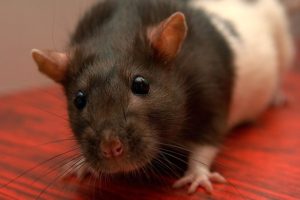
A brown and white rat
California is home to a diverse range of rodents, with over 35 species identified within the state. These rodents encompass a variety of sizes and habitats, from the tiny deer mouse to the larger California ground squirrel. Get to know the most common rodents in California and find out whether or not they are harmful.
1. Norway Rat
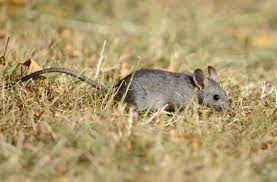
The Norway rat (Rattus norvegicus) is a large, brown rat that is common in urban areas in California, especially in dark, damp places. They are infamous for their size and their ability to carry diseases. Also known as the brown or sewer rat, this is the most common rat species in California and the United States. Their favorite habitats include sewers, drains, basements, crawl spaces, and attics. They are also found in parks, gardens, and other outdoor areas.
Adult Norway rats can grow up to 16 inches in length, including their tail. They have a heavyset body with a short, blunt snout, small ears, and small, beady eyes. Their fur is typically coarse and brown or gray, but it can also be black or white.
Norway rats can be a major pest in homes and businesses capable of damaging your property, contaminating food, and spreading diseases. They can also be a nuisance, as they will often make noise and leave droppings.
If you need help with rodent infestation, check out the most common causes of rodent infestation and prevention tips.
2. Roof Rat
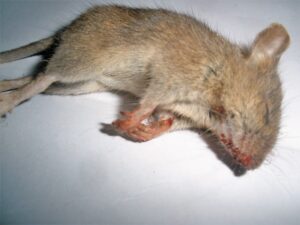
The roof rat (Rattus rattus) is a medium-sized, black rat native to Asia but has spread to urban areas around the world, including California. This rodent is known for its ability to climb trees and its nesting habit in attics and roofs. Also known as the black rat or the house rat, this species is smaller and more agile than the Norway rat.
Adult roof rat typically measures 7 to 10 inches, including their tail. It has a slender body with a long, pointed snout, large ears, and large, dark eyes. Its fur is typically sleek and black or brownish-gray, with a lighter underside.
Like most rats, roof rats can be a nuisance as they will often make noise and leave droppings. They can also cause damage to property, contaminate food, and carry diseases.
3. House Mouse
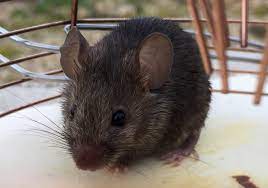
The house mouse (Mus musculus) is the smallest of the three most common rodents in California, usually found in homes and other human-occupied structures. House mice are known for their ability to squeeze through small openings and their habit of nesting in walls, kitchens, pantries, basements, and attics.
The fur of house mice is typically gray or brown on the top, with a lighter gray or white underside. They have a pointed snout, small ears, and large, black eyes. Their body grows between 2.5 to 4 inches and a tail length of 3 to 4 inches.
House mice can be a major pest in homes and businesses. They can damage property, contaminate food, and spread diseases. They can also be a nuisance, as they will often run around at night, make noise, and leave droppings.
4. California Deer Mouse
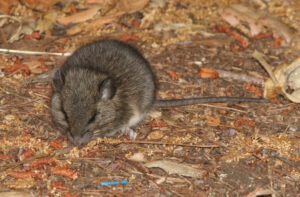
California deer mice (Peromyscus californicus) are small, brown rodents with large ears and large eyes usually found in grasslands, forests, and suburban areas. They are the most abundant rodents in North America, and yes they can be found throughout California but are more common in central and southern, from the coast to the mountains. They are not as commonly found in homes as the house mouse, but they can be a nuisance in rural areas.
Their dorsal fur varies from pale yellow to reddish brown, often with a darker stripe along the back, while their abdominal fur is creamy white or grayish white. Their tail is dark brown on the upperside and white on the underside. Their body length grows between 2.5 to 3.5 inches while their tail grows between 4 to 5.5 inches.
California deer der mouse can carry hantavirus, a potentially serious illness, so it’s crucial to avoid direct contact with deer mice or their droppings.
5. Western Jumping Mouse
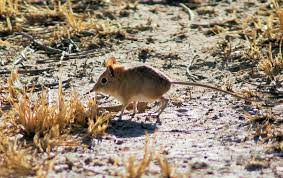
The western jumping mouse (Zapus princeps) is a small, brown mouse with long hind legs and a long tail. Jumping mice are found in meadows, forests, and along streams in western North America, including California. They can make impressive leaps; it’s in their name for a reason.
Their body grows between 7 to 10 inches, including their tail. Their hind legs are significantly longer than their front legs, giving them a distinctive kangaroo-like appearance. The fur of western jumping mice is typically dark grayish-brown on the upper body, with a broad yellow to red band along the flanks and a pale yellowish-white underside. Their ears are large and dark, and their eyes are large and black. Some individuals may have white spots on the upper body or on the tip of the tail.
Western jumping mice play an important role in the ecosystem as predators of insects and prey for various predators, including owls, snakes, and foxes. They are also an indicator of healthy forest ecosystems. Western jumping mice are not typically considered pests and are not known to carry diseases that can be transmitted to humans. However, if you encounter a western jumping mouse in your home or property, it is best to avoid direct contact and contact a wildlife rehabilitation center or pest control professional for assistance.
6. California Ground Squirrel
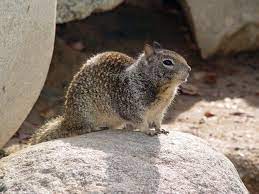
The California ground squirrel (Spermophilus beecheyi), also known as Beechey ground squirrel, is a large, ground-dwelling rodent that is common in open habitats throughout California such as meadows, fields, and oak woodlands. Ground squirrels are known for their distinctive yellow-brown fur and their habit of standing up on their hind legs to look around.
Their body grows between 10 to 14 inches, while their tail grows between 5 to 7 inches. They have mottled dorsal fur with a mixture of gray, light brown, and dusky hairs and a darker gray stripe that extends from the head down to the middle of the back. The shoulders and sides of the head are a lighter gray while they have white fur around the eyes.
Ground squirrels can cause damage to crops and gardens and can carry fleas and other parasites.
7. California Vole
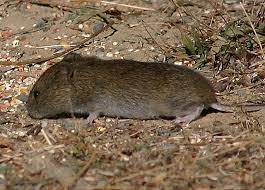
The California vole (Microtus californicus) is a small, brown rodent found in moist habitats throughout California, including meadows, forests, and along streams. They are not typically found in homes, but they can be a nuisance if they invade gardens or other areas around homes.
Their body grow between 3.5 to 5 inches and their tail grows between 2 to 3 inches. Their abdominal fur is grayish white, while their dorsal fur varies from tawny olive to reddish brown, sometimes with a darker stripe along the back. The tail is dark brown on the upper side and grayish-white on the underside.
California voles can cause damage to crops and gardens and can carry hantavirus.
8. Porcupine
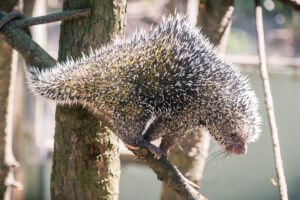
Porcupine is a large, brown rodent with long, sharp spines. Porcupines are found in forests, mountains, and deserts throughout California. In California, two porcupine species are
found: the North American porcupine (Erethizon dorsatum) and the Mexican porcupine (Erethizon dorsatum nigrescens).
Porcupines are among the largest rodents in California. North American porcupines typically measure 25 to 36 inches in length, not including their tail, while Mexican porcupines are slightly smaller, with a body length of 24 to 30 inches.
Porcupines are nocturnal animals, with most activity occurring at night. They are excellent climbers and spend most of their time in trees. Porcupines are solitary animals and maintain individual territories. They are not necessarily a threat to humans.
Seek Help from Rodent Control Experts
Pro Pacific Pest Control can help you eliminate rodents. We offer QualityPro-certified rodent control treatments to eliminate all types of rodents. Learn more about our Rodent Control and Extermination Service in San Bernardino, Los Angeles, San Diego, Riverside, and Orange County.
Call Pro Pacific Pest Control at 619-494-3380 to schedule a FREE inspection and estimate!



